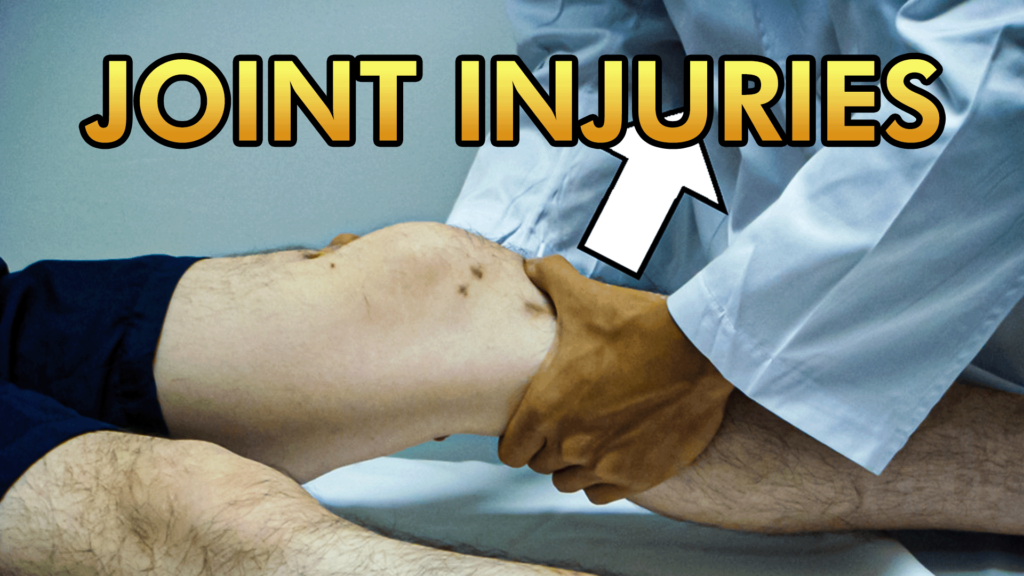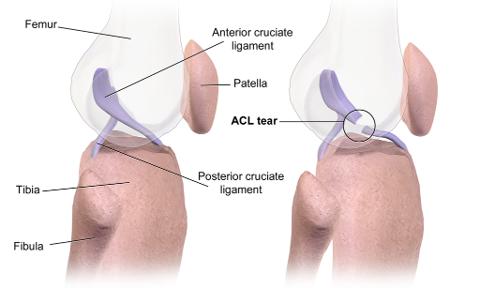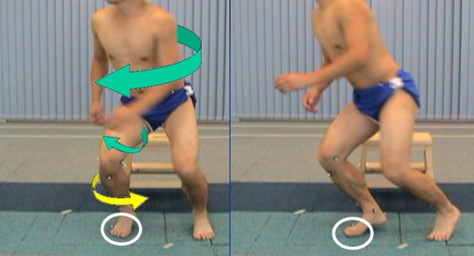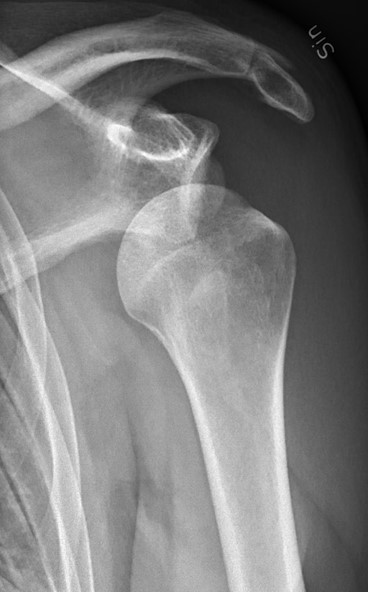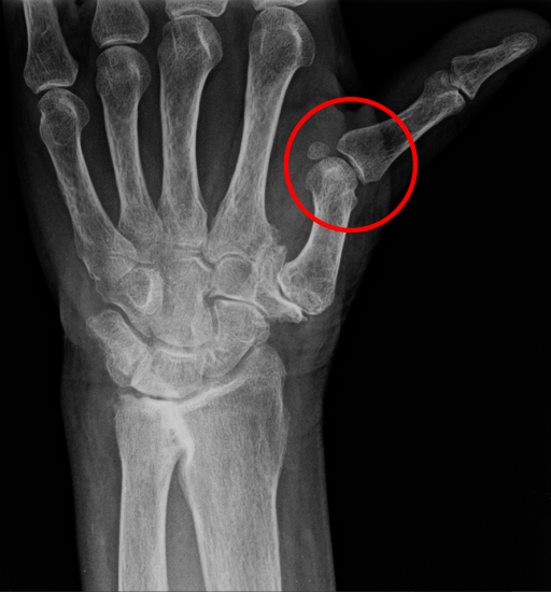Joint injuries include sprains, strains, subluxations and dislocations and those will be explained here
Sprain
- Injury of ligaments and joint capsule
- Most common locations for sprains are knee, ankle and acromioclavicular joint
- Mechanism of injury is by twisting or tilting forces affecting the joint
Sprain Grading
- Grade 1
- Minimal tearing of the ligament
- Heals completely without any dysfunction
- Grade 2
- Partial tearing of the ligament
- Can’t heal completely which lead to weakness in the ligament (easy to get injured)
- Grade 3
- Complete tearing (rupture)
- Leads to joint instability
Sprain Clinical features
- Patient reports that the joint suddenly forced into abnormal position after trauma, sometimes patient hears or feels a snap
- Acute severe pain with/without contusion and hemarthrosis
- On examination (mostly under anesthesia) you find about joint instability using special tests
Sprain radiographic features
- Best seen with US and MRI, X ray is normal
- Injured ligament show the following features
- Thickened and hypoechoic ligament with area of discontinuity of fibers
- Edema along the injured ligament
- Hemorrhage
Sprain treatment
- Any ligament injury grade treated conservatively initially
- RICE: resting the injured limb, putting Ice on the injury for less than 20 minutes, compression with a bandage and elevation of the injured limb to limit edema formation
- The sprained joint supported in a splint, after 1-2 weeks the splint is exchanged for a functional brace to allow joint movement
- Physiotherapy is initiated to strengthen the muscles around the sprained joint
- After a while, there is usually some joint instability, if it is symptomatic then surgical reconstruction of the ligament is needed
Strain
- Strain is an injury to a muscle or a tendon or both
- Strain is mostly caused as a result of playing sports, usually the tendon or muscle overstretches and injuries
- Strain could be partial tearing or complete tearing or tendon rupture
- Strain could be acute (following trauma), or chronic due to repetitive tearing of a muscle or tendon
Strain Clinical features
- Pain
- Loss of function of the affected muscle
- Contusion of the skin overlying the muscle
- Localized inflammation
Strain classification
- Strain classified into 3 grades based on severity:
- Grade 1: mild strain with minimal tearing of muscle fibers or tendon
- Grade 2: moderate strain with partial tearing of muscle fibers or tendon
- Grade 3: severe strain with completely torn muscle or tendon
Strain treatment
- Initially strain treated with Resting the injured limb, applying Ice to induce vasoconstriction for less than 20 minutes to limit the edema and contusion formed, Compression of the injured area with bandage and Elevation of the injured limb to limit the edema
- All those steps are collected in the mnemonic RICE
- NSAIDs also used to reduce pain and swelling
- If grade 3 injury of the tendon or muscle, then it should be repaired operatively
Dislocations and subluxations
- Dislocation is complete displacement between the joint surfaces (no contact)
- Subluxation is incomplete or partial displacement of the joint surfaces
Dislocations and subluxations clinical features
- The joint is painful
- Patient avoid moving it
- There is obvious deformity of the joint
- X ray should be done, shows the dislocations and associated bony injury if any
Dislocations and subluxations treatment
- The dislocation must be reduced as soon as possible
- Sedation is required, general anesthesia maybe needed
- Muscle relaxant maybe used
- After reduction , the joint is rested until soft tissue welling decreases
- Then controlled movement begin with physiotherapy
- There might be residual instability or recurrency of the dislocation which is solved by surgery
Dislocations and subluxations complications
- Vascular injury
- Nerve injury
- Avascular necrosis
- Joint stiffness
- Osteoarthritis
Course Menu
This article is apart from Orthopedic Trauma Basic Principles Course, This course covers these topics:

